Treating and Preventing Malaria Using Data-Driven Innovations in Northern Uganda
April 23rd, 2021 | story
Daniel, Anna, and their three children were recently tested for malaria in the Alebtong district in Northern Uganda. Two of the children tested positive even though they did not show any associated signs and symptoms such as fever, chills, body aches, headaches, joint pain, weakness, appetite loss, and fatigue.
The family participated in a mass malaria testing and treating outreach session in the district in December 2020 through the USAID RHITES-North, Lango project, in collaboration with health workers and village health teams from Awei Health Centre III in Alebtong and due to the surge of malaria cases earlier in the year. Despite being preventable and treatable, malaria continues to cause high levels of morbidity and mortality Lango sub-region. In 2020, approximately 970,000 malaria cases were identified and treated in Lango, 79% of which were adults, and 21% children under 5 years. That year, 164 children 0-4 years and 94 adults died of malaria (District Health Information Software Annual Report 2020).
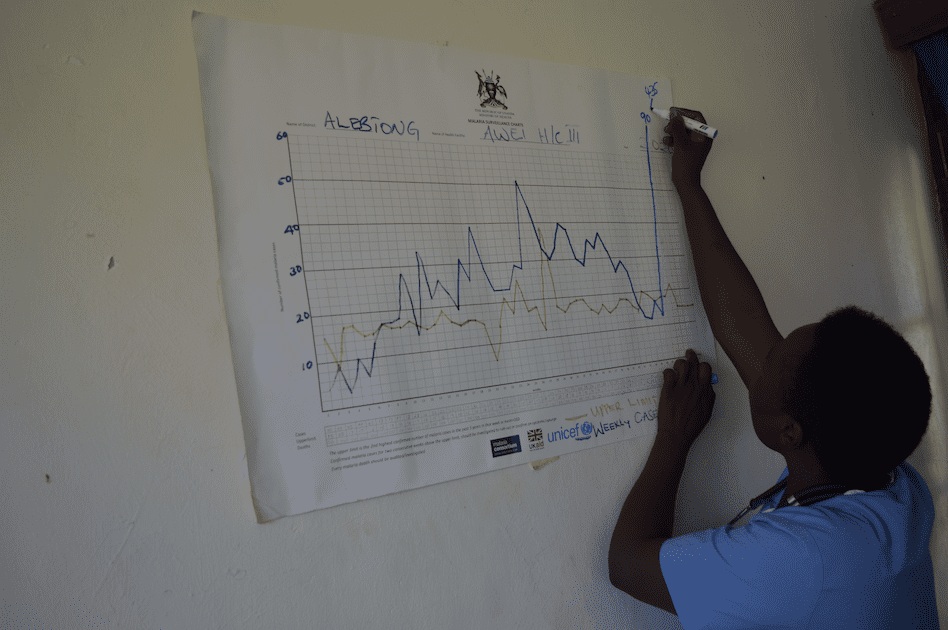
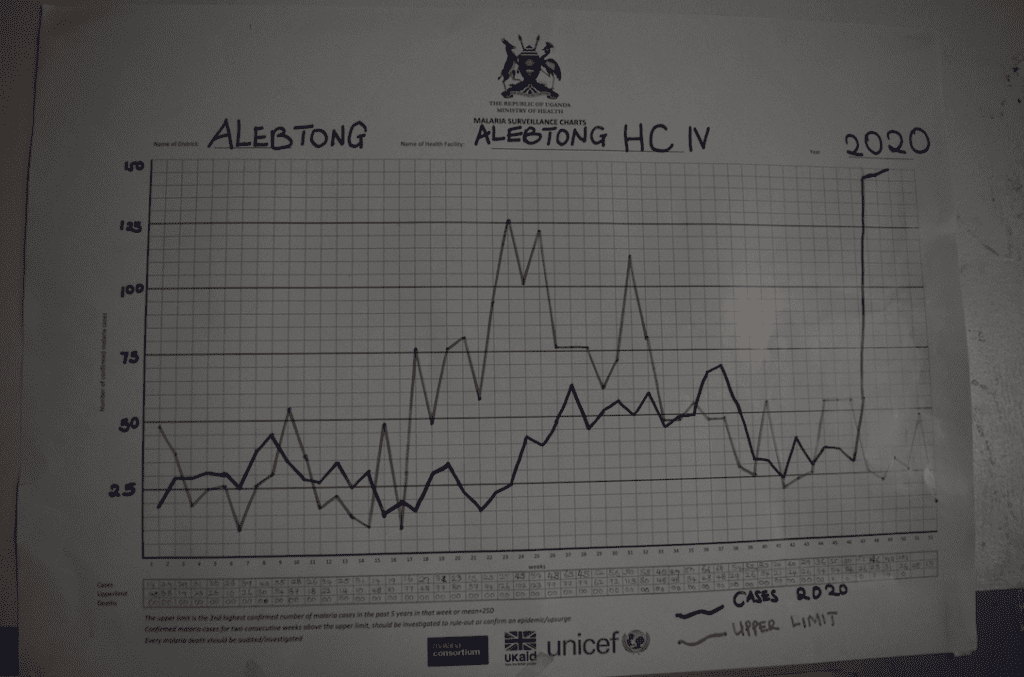
Malaria normal channel graphs showing the trends of weekly malaria cases at health facilities in Alebtong District (December 2020). Photo: Angela Kateemu
Malaria cases and deaths in the Lango sub-region and Uganda as a whole can be attributed to the lack of access to indoor residual spraying and inconsistent use of treated bed nets among people at risk for malaria. There are other factors, too: the region is awash in swamps, which are excellent breeding grounds for mosquitoes. So even with indoor residual spraying and mosquito nets, the chances for mosquito bites while outdoors remain high.
In Alebtong, despite indoor spraying and distribution of bed nets, malaria cases were on the between July and December 2020, when the rate soared from 1,624 to 7,113 cases—a 338% increase. USAID RHITES-N, Lango conducted an assessment, with support from district health teams, to find the cause of this alarming surge.
The assessment revealed that malaria was present among community members who were asymptomatic; like Daniel and Anna’s children, they had malaria but showed no signs or symptoms (in one of the communities, 45% of residents were asymptomatic). District health teams, with support from the project, identified 106 villages as most affected, and launched a malaria mass test and treat campaign to interrupt malaria transmission.
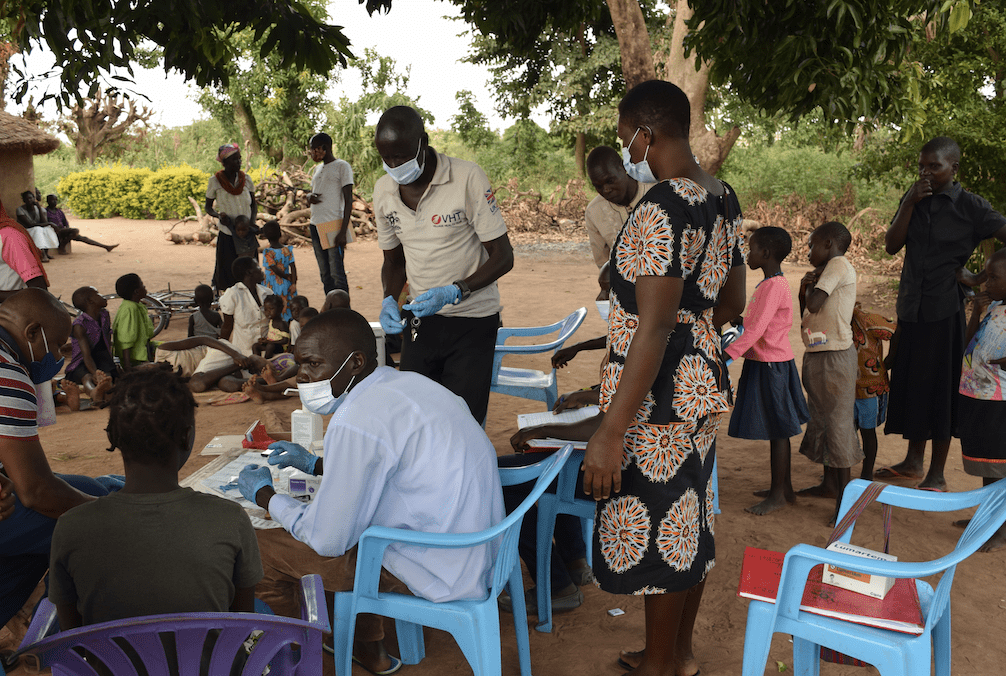
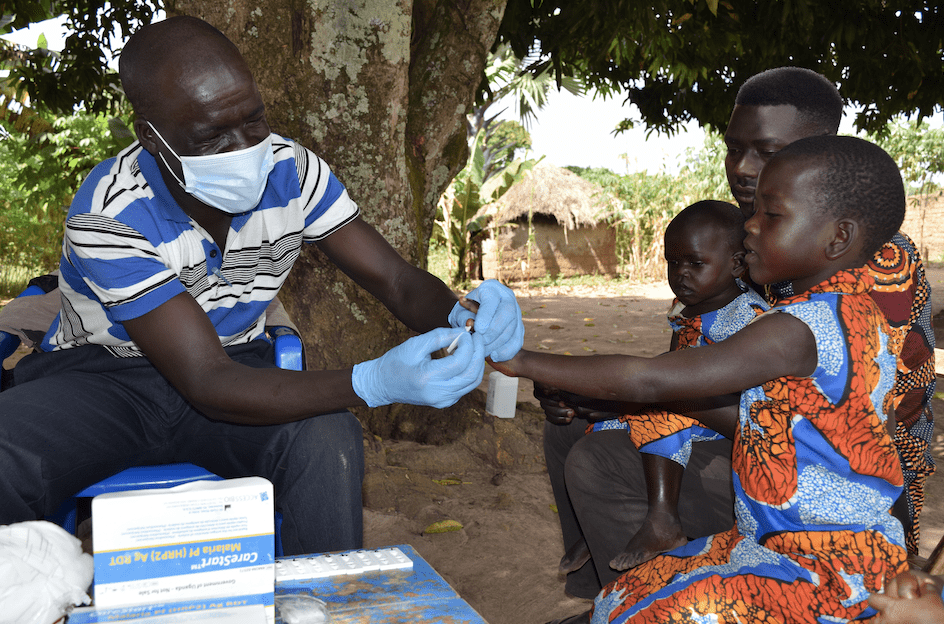
Community mass malaria testing and treatment outreaches are conducted by village health teams with support from health facilities, malaria mentors, and project staff. Photo: Angela Kateemu
Community perceptions of malaria
USAID RHITES-N, Lango project works with health facilities and community structures like village health teams to create awareness on mosquitos and malaria transmission, testing, and treatment. Community members have perceptions about the causes of malaria. While most people are aware that mosquitoes cause malaria transmission, there are still many misconceptions about the actual transmission of malaria. For example, some attribute it to food like raw mangoes; poor hygiene; or exposure to someone with malaria, while others believe it is linked to rainy weather.
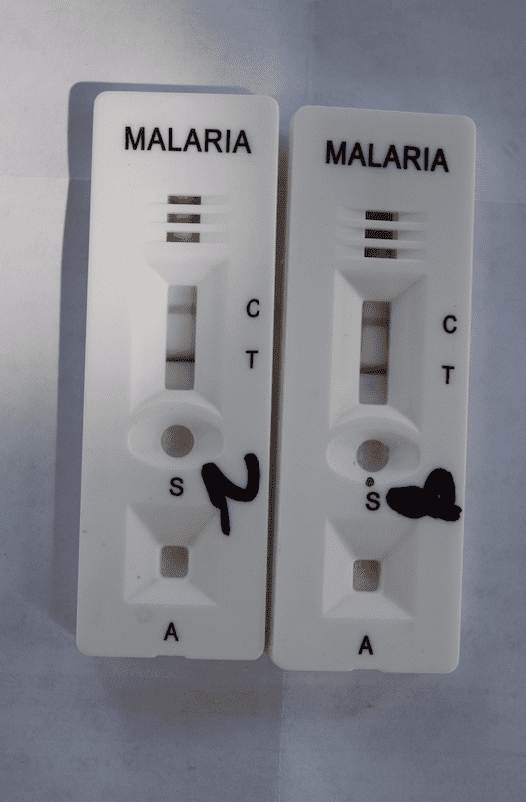
One of USAID RHITES-N, Lango’s mandates is to contribute to a reduction in malaria deaths and illness among the general population and vulnerable groups, including children under 5 and pregnant women. To achieve this, the project, in collaboration with the Ministry of Health, supports the National Malaria Control Division by distributing treated bed nets, supporting facilities and village health teams to manage cases, and educating people on malaria prevention through social and behavior change in the nine districts of the Lango sub-region. As a result of the outreach sessions, there was a 31% decrease in the number of malaria cases since October 2020.
Written by Ambrose Okite and Angela Kateemu
We strive to build lasting relationships to produce better health outcomes for all.